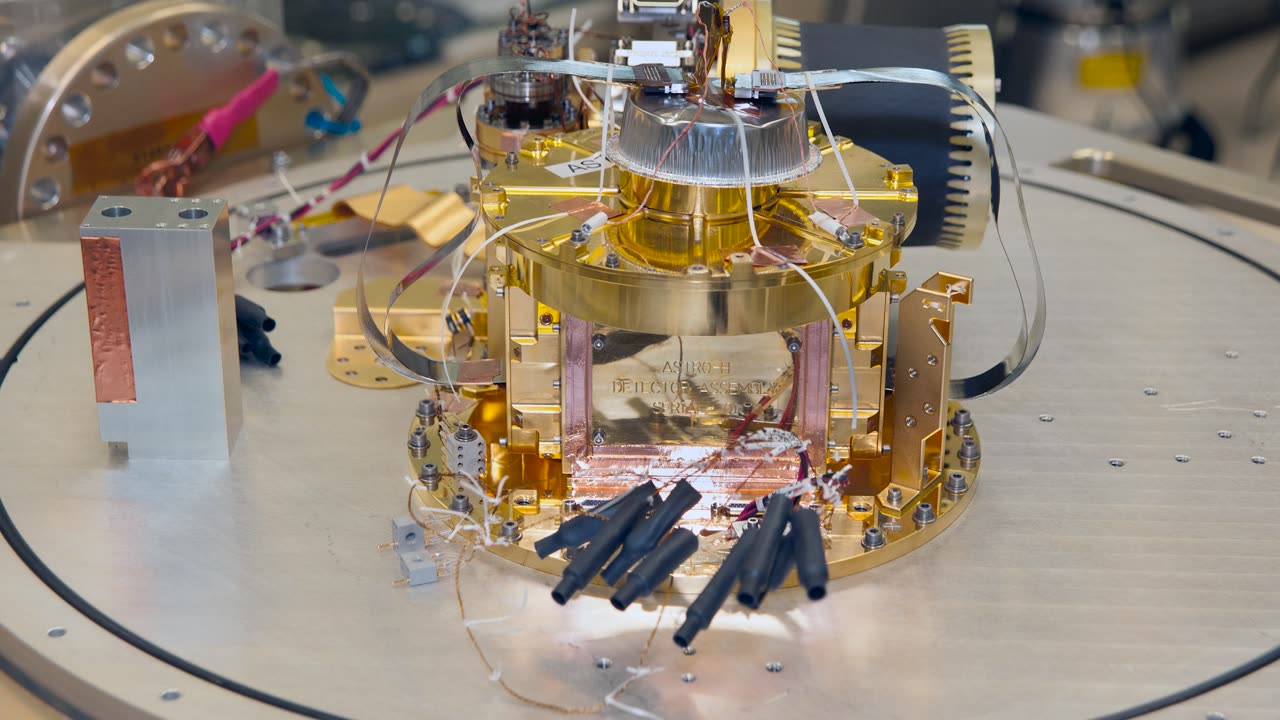Premium Only Content

XRISM: Exploring the Hidden X-ray Cosmos #XrayRevelations
A powerful satellite called XRISM (X-ray Imaging and Spectroscopy Mission) is set to provide astronomers with a revolutionary look at the X-ray sky.
XRISM is led by JAXA (Japan Aerospace Exploration Agency) in collaboration with NASA and with contributions from ESA (European Space Agency).
XRISM detects X-rays with energies ranging from 400 to 12,000 electron volts. (For comparison, the energy of visible light is 2 to 3 electron volts.)
This range will provide astrophysicists with new information about some of the universe’s hottest regions, largest structures, and objects with the strongest gravity.
The mission has two instruments, Resolve and Xtend.
Resolve is a microcalorimeter spectrometer developed in collaboration between JAXA and NASA. When an X-ray hits Resolve’s 6-by-6-pixel detector, its energy causes a tiny increase in temperature. By measuring each individual X-ray’s energy, the instrument provides information about the source, such as its composition, motion, and physical state.
To detect these tiny temperature changes, Resolve must operate at just a fraction of a degree above absolute zero. It reaches this state in orbit after a multistage mechanical cooling process inside a refrigerator-sized container of liquid helium.
XRISM’s second instrument, Xtend, was developed by JAXA. It will give XRISM one of the largest fields of view of any X-ray imaging satellite flown to date, observing an area about 60% larger than the average apparent size of the full moon. The images it collects will complement the data collected by Resolve.
Each instrument is at the focus of an XMA (X-ray Mirror Assembly) designed and developed at Goddard.
X-ray wavelengths are so short, they can pass straight between the atoms of the dish-shaped mirrors used to capture visible, infrared, and ultraviolet light.
Instead, X-ray astronomers use nested curved mirrors turned on their sides. The X-rays skip off the surfaces like stones across a pond and into the detectors.
Each of XRISM’s XMAs houses hundreds of concentric, precisely shaped aluminum shells built in quadrants and assembled into a circle. In all, there are over 3,200 individual mirror segments in the two mirror assemblies.
After launch, XRISM will begin a months-long calibration phase, during which Resolve will reach its operating temperature.
#XRISM
#XrayDetection #AstrophysicsDiscovery #SpaceObservatory #Astrolnstruments
#Xtendlmaging #SpaceTech #Xray Telescope
#AstronomyFacts #ScientificExploration
#HiddenUniverseRevealed #XrayMirror Technology #XrayUniverseRevealed #SpaceScienceExploration
#AstrophysicsInsights #CosmicXrayMission
#AstronomyBreakthroughs #XrayTelescopeMission #UnlockingCosmicMysteries #SpaceXrayObservation
-
 LIVE
LIVE
Chad Prather
15 hours agoHow to Love Like Jesus in a World That’s Lost Its Heart!
7,022 watching -
 LIVE
LIVE
The Chris Salcedo Show
11 hours agoReckoning on Injustices Perpetrated Against Americans
405 watching -
 LIVE
LIVE
LFA TV
12 hours agoLIVE & BREAKING NEWS! | FRIDAY 10/17/25
3,008 watching -
 LIVE
LIVE
Game On!
18 hours agoAnother Football Friday! BEST BETS For The Weekend!
1,153 watching -
 14:23
14:23
Tactical Considerations
14 hours ago $2.84 earned5 Budget Pistols I would Actually Carry Under $425
11.5K1 -
 15:24
15:24
ArynneWexler
18 hours ago"I'm the Mayor Now" Somalian Midwest Takeover | NN Clip
2.41K15 -
 14:49
14:49
Esports Awards
18 hours agoEsports Awards 2025 Finalist Reveal
3.84K -
 LIVE
LIVE
BEK TV
23 hours agoTrent Loos in the Morning - 10/17/2025
129 watching -
 53:31
53:31
Daniel Davis Deep Dive
15 hours agoU.S. War Dept v. Russia /Larry Johnson & Lt Col Daniel Davis
3.9K6 -
 3:40
3:40
NAG Daily
14 hours agoHOW TO NEVER BE WRONG AGAIN (A COMPLETE GUIDE W/GreenMan Reports)
3.06K